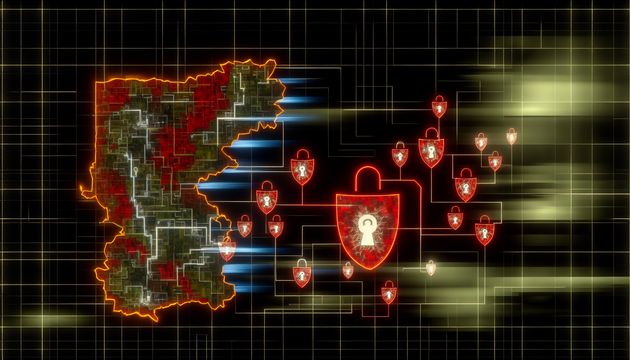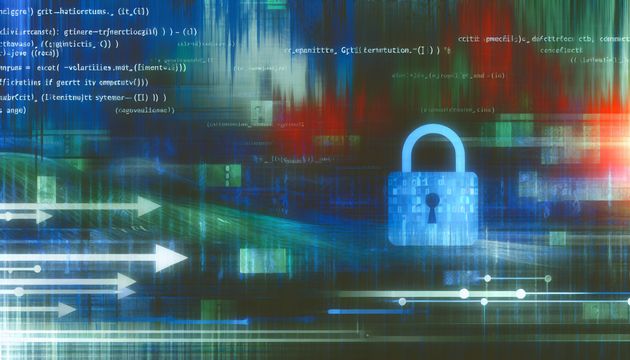
Understanding the Akira Ransomware Attack on Hitachi Vantara
The recent ransomware attack on Hitachi Vantara by the notorious Akira group has highlighted significant vulnerabilities in corporate cybersecurity. This incident forced Hitachi Vantara to take its servers offline, disrupting operations and showcasing the severe impact such attacks can have on global enterprises. According to BleepingComputer, while the company’s cloud services remained unaffected, its systems and manufacturing operations faced substantial disruptions. This attack underscores the critical need for robust cybersecurity measures and the importance of understanding the tactics employed by ransomware groups like Akira, who are known for their double extortion techniques, as detailed by Trend Micro.
Impact on Hitachi Vantara Operations
The Akira ransomware attack had a significant impact on Hitachi Vantara’s operations. The company was forced to take its servers offline to contain the breach, which led to disruptions in various services. According to BleepingComputer, Hitachi Vantara’s website was under maintenance, and their cloud services were reportedly unaffected. However, the company’s systems and manufacturing operations were disrupted as part of the containment strategy. This section will explore the extent of the operational impact on Hitachi Vantara.
Disruption of Services
The ransomware attack led to a significant disruption in Hitachi Vantara’s services. The company’s remote and support operations were taken offline, affecting their ability to provide customer support and manage remote services. Despite these disruptions, customers with self-hosted environments were still able to access their data, as noted in the BleepingComputer report. This distinction was crucial in mitigating the impact on customers who rely on self-hosted solutions.
Impact on Manufacturing Operations
Hitachi Vantara’s manufacturing operations were also affected by the ransomware attack. The containment efforts required taking certain systems offline, which disrupted manufacturing processes. This disruption highlights the broader impact of ransomware attacks on industrial operations, where downtime can lead to significant financial losses and delays in production schedules. The attack on Hitachi Vantara underscores the vulnerability of manufacturing systems to cyber threats and the importance of robust cybersecurity measures.
Data Exfiltration and Ransom Demands
The Akira ransomware group is known for employing double extortion tactics, which involve exfiltrating data before encrypting files. In the case of Hitachi Vantara, the ransomware gang stole files from the company’s network and left ransom notes on compromised systems, as reported by BleepingComputer. This section will delve into the specifics of the data exfiltration and ransom demands associated with the attack.
Exfiltration Techniques
The Akira ransomware group uses sophisticated techniques to exfiltrate data from compromised networks. According to Trend Micro, the group employs tools such as RClone, FileZilla, and WinSCP to transfer stolen information via File Transfer Protocol (FTP). These tools enable the attackers to move large volumes of data quickly and efficiently, increasing the pressure on victims to pay the ransom to prevent public data leaks.
Ransom Demands
The ransom demands made by the Akira group vary depending on the size and nature of the compromised organization. As reported by BleepingComputer, the gang’s demands range from $200,000 to several million dollars. This wide range reflects the group’s strategy of tailoring their demands to the victim’s perceived ability to pay, maximizing their chances of receiving a ransom payment. The FBI estimates that Akira ransomware collected approximately $42 million in ransom payments by April 2024, highlighting the financial impact of these attacks.
Security Vulnerabilities and Attack Vectors
The Akira ransomware group exploits various security vulnerabilities to gain access to target networks. Understanding these vulnerabilities and attack vectors is crucial for organizations looking to bolster their defenses against similar threats. This section will examine the specific vulnerabilities and techniques used by the Akira group in the attack on Hitachi Vantara.
Exploiting VPN Vulnerabilities
One of the primary attack vectors used by the Akira group is exploiting vulnerabilities in Virtual Private Networks (VPNs). According to Rewterz, the group targets VPNs lacking multi-factor authentication (MFA), allowing them to gain unauthorized access to networks. This method is particularly effective against organizations that rely on VPNs for remote access without implementing additional security measures like MFA.
Use of Credential Harvesting Tools
Once inside a network, the Akira group employs tools such as Mimikatz and LaZagne to harvest credentials and move laterally within the network. These tools allow the attackers to escalate privileges and access sensitive systems and data. The use of such tools underscores the importance of securing credentials and implementing robust access controls to prevent unauthorized access.
Broader Implications for Cybersecurity
The attack on Hitachi Vantara by the Akira ransomware group has broader implications for cybersecurity across industries. This section will explore the lessons learned from the attack and the measures organizations can take to protect themselves against similar threats.
Importance of Multi-Factor Authentication
The exploitation of VPN vulnerabilities by the Akira group highlights the critical importance of implementing multi-factor authentication (MFA) as a security measure. Organizations should ensure that all remote access points, including VPNs, are protected by MFA to prevent unauthorized access. This measure can significantly reduce the risk of ransomware attacks and other cyber threats.
Need for Comprehensive Incident Response Plans
The disruption caused by the ransomware attack on Hitachi Vantara underscores the need for comprehensive incident response plans. Organizations should have clear protocols in place for responding to cyber incidents, including procedures for isolating affected systems, communicating with stakeholders, and recovering data. A well-prepared incident response plan can help minimize the impact of an attack and facilitate a quicker recovery.
Investment in Cybersecurity Training
The attack on Hitachi Vantara also highlights the importance of investing in cybersecurity training for employees. Organizations should conduct regular training sessions to educate employees about the latest cyber threats and best practices for protecting sensitive data. By fostering a culture of cybersecurity awareness, organizations can reduce the risk of successful attacks and enhance their overall security posture.
Future Outlook and Preparedness
As ransomware groups like Akira continue to evolve and become more sophisticated, organizations must remain vigilant and proactive in their cybersecurity efforts. This section will discuss the future outlook for ransomware threats and the steps organizations can take to enhance their preparedness.
Evolving Threat Landscape
The ransomware threat landscape is constantly evolving, with groups like Akira developing new tactics and techniques to bypass security measures. According to CybelAngel, understanding the playbook of ransomware groups is essential for anticipating future threats and adapting security strategies accordingly. Organizations should stay informed about the latest developments in ransomware tactics and adjust their defenses to address emerging threats.
Strengthening Cyber Resilience
To enhance their resilience against ransomware attacks, organizations should adopt a multi-layered approach to cybersecurity. This includes implementing robust security measures, such as firewalls, intrusion detection systems, and endpoint protection, as well as regularly updating software and patching vulnerabilities. By adopting a comprehensive approach to cybersecurity, organizations can better protect themselves against ransomware threats and minimize the impact of potential attacks.
Collaboration and Information Sharing
Collaboration and information sharing among organizations, industry groups, and government agencies are crucial for combating ransomware threats. By sharing threat intelligence and best practices, organizations can enhance their collective defenses and stay ahead of cybercriminals. Initiatives such as industry-specific information sharing and analysis centers (ISACs) can facilitate collaboration and help organizations respond more effectively to ransomware threats.
In conclusion, the Akira ransomware attack on Hitachi Vantara serves as a stark reminder of the growing threat posed by ransomware groups. By understanding the tactics and techniques used by these groups and implementing robust cybersecurity measures, organizations can better protect themselves against future attacks and enhance their overall security posture.



